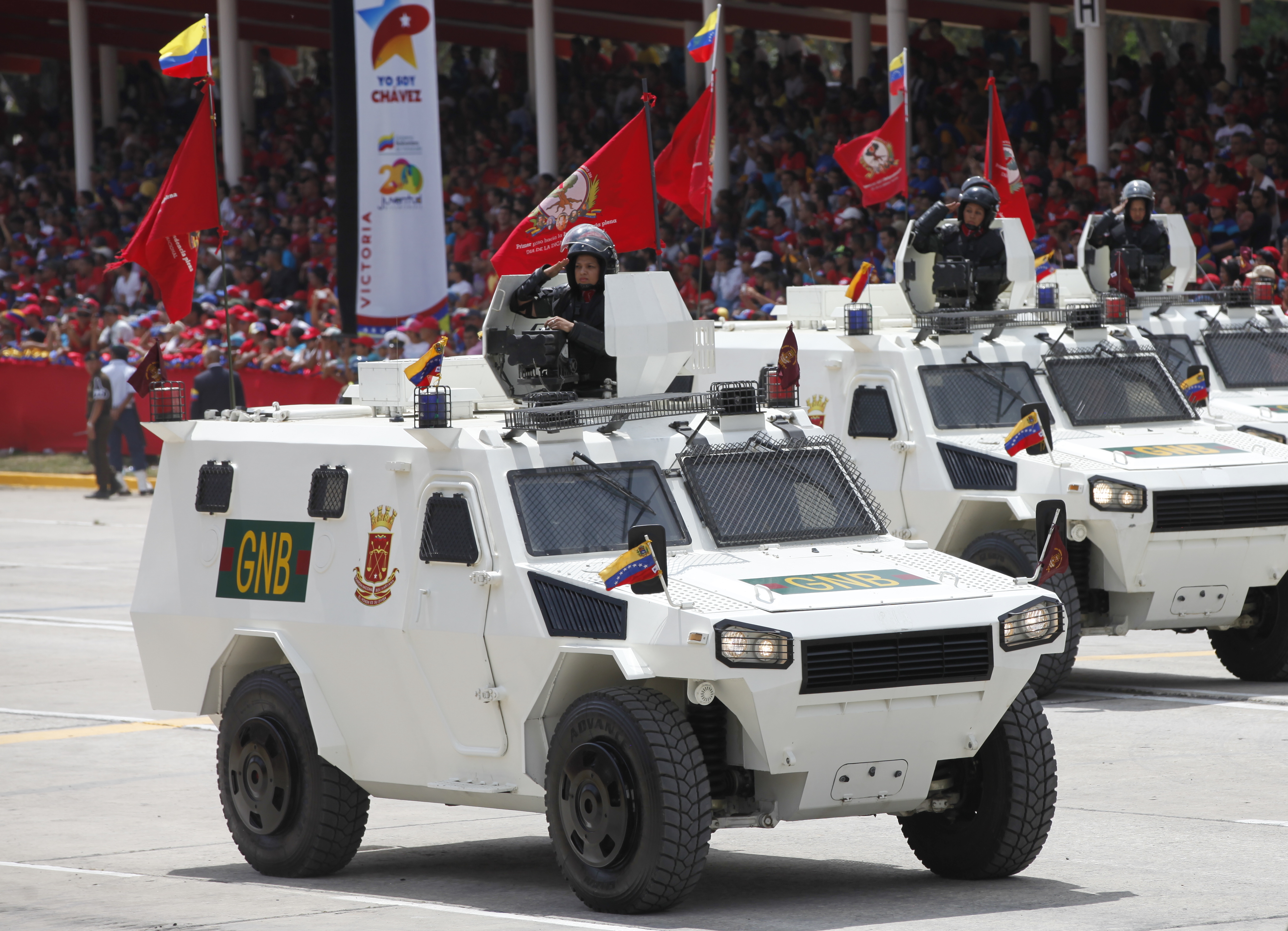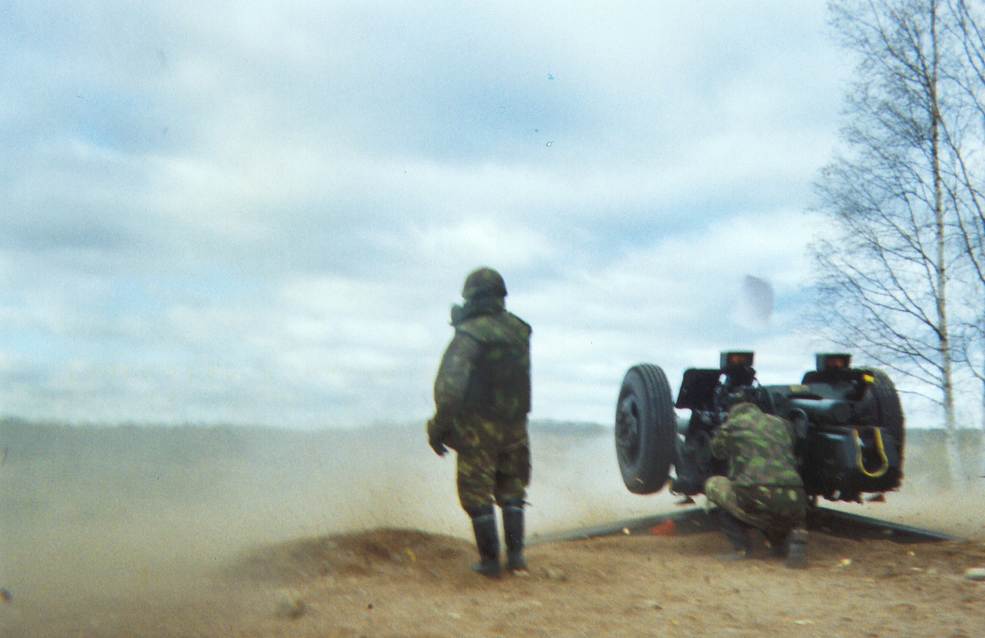|
Type 90 AFV
The Type 90 is an armoured fighting vehicle produced by Chinese company Norinco; it is the successor for the Type 85 AFV of which it uses some components. The Type 90 series was developed for export, and consists of at least 10 different types; its industrial index is YW535. This new type is rather similar to its predecessors Type 85 AFV and Type 89 AFV, but the hull has a different shape, having a vertical lower side wall and a sloping upper side wall. Overall, the Type 90 is bigger and heavier, yet has a lower profile. Description The hull is made of all-welded homogeneous armour plate, and provides protection against small arms fire. The vehicle carries a maximum of 15 including crew. The driver sits in the front left of the hull, and has a single piece hatch, which opens to the left. The driver is provided with three day periscopes. One of them can be replaced by a passive low-light-level night vision device or infrared sight. The commander sits behind the driver and has a ... [...More Info...] [...Related Items...] OR: [Wikipedia] [Google] [Baidu] |
Armoured Personnel Carrier
An armoured personnel carrier (APC) is a broad type of armoured military vehicle designed to transport personnel and equipment in combat zones. Since World War I, APCs have become a very common piece of military equipment around the world. According to the definition in the Treaty on Conventional Armed Forces in Europe, an APC is "an armoured combat vehicle which is designed and equipped to transport a combat infantry squad and which, as a rule, is armed with an integral or organic weapon of less than 20 millimetres calibre." Compared to infantry fighting vehicles (IFVs), which are also used to carry infantry into battle, APCs have less armament and are not designed to provide direct fire support in battle. Infantry units which travel in APCs are known as mechanized infantry. Some militaries also make a distinction between infantry units which use APCs and infantry units which use IFVs, with the latter being known as armoured infantry in such militaries. History The genesis o ... [...More Info...] [...Related Items...] OR: [Wikipedia] [Google] [Baidu] |
Norinco
China North Industries Group Corporation Limited, doing business internationally as Norinco Group (North Industries Corporation), and known within China as China Ordnance Industries Group Corporation Limited (), is a Chinese state-owned defense corporation that manufactures a diverse range of commercial and military products. Norinco Group is one of the world's largest defense contractors. The company's subsidiary, China North Industries Corporation (), or simply Norinco, markets Norinco Group's products internationally, and is also involved in domestic civil construction and military defense projects. History Established in 1980 with the approval of the State Council of China, Norinco is an enterprise group engaged in both products and capital operation, integrated with research and development, manufacturing, marketing and services. Norinco mainly deals with defense products, petroleum & mineral resources development, international engineering contracting, optronic products, ... [...More Info...] [...Related Items...] OR: [Wikipedia] [Google] [Baidu] |
Deutz AG
Deutz AG is a German internal combustion engine manufacturer, based in Porz, Cologne, Germany. History The company was founded by Nicolaus Otto, the inventor of the four-stroke internal combustion engine, and his partner Eugen Langen on 31 March 1864, as N. A. Otto & Cie, later renamed to Gasmotoren-Fabrik Deutz after moving operations in 1869 from Cologne to Deutz, located on the opposite side of the Rhine, also called "the wrong side" in Cologne. In the early years, Otto and Langen were interested only in producing stationary engines, not automobiles. Georgano, G.N. ''Cars: Early and Vintage, 1886-1930''. (London: Grange-Universal, 1985) The technical director, Gottlieb Daimler, was eager to produce automobiles. In the middle of the 1870s, it was suggested that he transfer to the company's St. Petersburg factory to reduce his influence. He resigned, taking Wilhelm Maybach with him. Deutz also produced agricultural machines such as combine harvesters and tractors, as we ... [...More Info...] [...Related Items...] OR: [Wikipedia] [Google] [Baidu] |
Armoured Fighting Vehicle
An armoured fighting vehicle (AFV) is an armed combat vehicle protected by armour, generally combining operational mobility with offensive and defensive capabilities. AFVs can be wheeled or tracked. Examples of AFVs are tanks, armoured cars, assault guns, self-propelled guns, infantry fighting vehicles, and armoured personnel carriers. Armoured fighting vehicles are classified according to their characteristics and intended role on the battlefield. The classifications are not absolute; two countries may classify the same vehicle differently, and the criteria change over time. For example, relatively lightly armed armoured personnel carriers were largely superseded by infantry fighting vehicles with much heavier armament in a similar role. Successful designs are often adapted to a wide variety of applications. For example, the MOWAG Piranha, originally designed as an APC, has been adapted to fill numerous roles such as a mortar carrier, infantry fighting vehicle, and ... [...More Info...] [...Related Items...] OR: [Wikipedia] [Google] [Baidu] |
Type 85 AFV
The Type 85 is a tracked armoured fighting vehicle produced by Chinese company Norinco (industrial index: Type YW531H). It is an improved version of the Type 63 armoured personnel carrier. The vehicle is bigger, has additional firing ports and periscopes, a longer chassis with an additional road wheel on each side, and is equipped with an NBC protection system. The Type 85 series was developed in 1985, exclusively for the export market; for the PLA, the very similar Type 89 AFV was designed. The main user of the Type 85 series are the Royal Thai Armed Forces who received their first vehicles in 1987. Currently, the improved Type 90 AFV is offered for export. Description The hull is made of welded steel, and provides protection against small arms fire. The vehicle carries a maximum of 15 including crew. The driver sits in the front left of the hull, and has a single piece hatch, which opens to the left. The driver is provided with two day periscopes which cover the front an ... [...More Info...] [...Related Items...] OR: [Wikipedia] [Google] [Baidu] |
Type 89 AFV
The Norinco Type 89 tracked armoured fighting vehicle is a Chinese armoured personnel carrier. It was developed from the earlier export market Type 85 AFV vehicle. It entered service in the late 1990s and was first shown publicly in 1999. There are approximately 1,000 in service. It has the industrial index of WZ534 and although it was mainly developed for the PLA, there is also an export version YW534. In the 1990s a new designator system was introduced in the PLA and the Type 89 APC is nowadays known as ZSD-89. Description When compared to the Type 85, the Type 89 is slightly larger and heavier. The hull is made of welded steel, and provides protection against small arms fire. The vehicle carries a maximum of 15 including crew. The driver sits in the front left of the hull, and has a single piece hatch, which opens to the left. The driver is provided with three day periscopes which cover the front and right of the vehicle. One of the driver's periscopes can be replace ... [...More Info...] [...Related Items...] OR: [Wikipedia] [Google] [Baidu] |
BMP-2
The BMP-2 (''Boyevaya Mashina Pekhoty'', , literally "combat machine/vehicle (of the) infantry") is an amphibious infantry fighting vehicle introduced in the 1980s in the Soviet Union, following on from the BMP-1 of the 1960s. Development history Although the BMP-1 was a revolutionary design, its main armament, the 2A28 Grom and the 9S428 ATGM launcher capable of firing 9M14 Malyutka (NATO: AT-3A Sagger A) and 9M14M Malyutka-M (NATO: AT-3B Sagger B) ATGMs, quickly became obsolete. Therefore, the Soviet Union decided to produce an updated and improved version of the BMP-1. The main emphasis was put on improving the main armament. In 1972, work got under-way to develop an improved version of the BMP-1. During its combat debut in the Yom Kippur War, Egyptian and Syrian BMPs proved vulnerable to .50 calibre machine-gun fire in the sides and rear, and to 106 mm M40 recoilless rifles. The 2A28 Grom, 73 mm gun proved inaccurate beyond 500 metres, and the 9M14 Malyutka ... [...More Info...] [...Related Items...] OR: [Wikipedia] [Google] [Baidu] |
122 Mm Howitzer 2A18 (D-30)
The 122-mm howitzer D-30 ( GRAU index 2A18) is a Soviet howitzer that first entered service in 1960. It is a robust piece that focuses on the essential features of a towed field gun suitable for all conditions. The D-30 has a maximum range of 15.4 kilometers, or over 21 km using rocket-assisted projectile ammunition. With its striking three-leg mounting, the D-30 can be rapidly traversed through 360 degrees. Although no longer manufactured in the nations of the former Soviet Union, the D-30 is still manufactured internationally and is in service in more than 60 countries' armed forces. The barrel assembly of the 2A18 gun is used by the 2S1 self-propelled howitzer. There are also Egyptian, Chinese, Serbian and Syrian self-propelled variants and conversions. The Syrian conversion utilizes the hull of a T-34 tank. History The 122 mm (originally 48 lines) calibre was adopted by Russia in the early 20th century, becoming very important to Soviet artil ... [...More Info...] [...Related Items...] OR: [Wikipedia] [Google] [Baidu] |
Armoured Fighting Vehicles Of The People's Republic Of China
Armour (British English) or armor (American English; see spelling differences) is a covering used to protect an object, individual, or vehicle from physical injury or damage, especially direct contact weapons or projectiles during combat, or from a potentially dangerous environment or activity (e.g. cycling, construction sites, etc.). Personal armour is used to protect soldiers and war animals. Vehicle armour is used on warships, armoured fighting vehicles, and some mostly ground attack combat aircraft. A second use of the term ''armour'' describes armoured forces, armoured weapons, and their role in combat. After the development of armoured warfare, tanks and mechanised infantry and their combat formations came to be referred to collectively as "armour". Etymology The word "armour" began to appear in the Middle Ages as a derivative of Old French. It is dated from 1297 as a "mail, defensive covering worn in combat". The word originates from the Old French , itself deri ... [...More Info...] [...Related Items...] OR: [Wikipedia] [Google] [Baidu] |





.jpg)